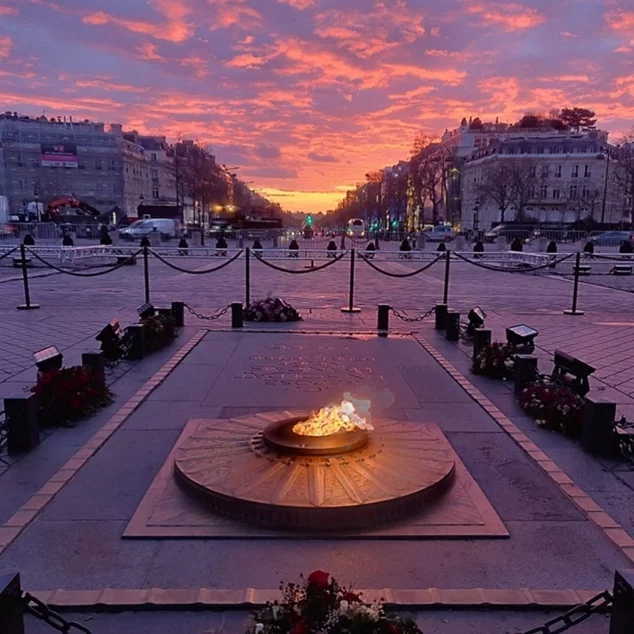A must-see
article | Reading time12 min
A must-see
article | Reading time12 min
Created between 1833 and 1836, the four sculpted groups that adorn the pedestals of the Arc de triomphe are masterpieces that evoke specific events: let us tell you more!
Created by François Rude between 1833 and 1836, this sculpted group illustrates an essential event in revolutionary history: the conscription of 1792, when nearly 200,000 men ordered by the Legislative Assembly organized the defense of France in the face of foreign armies aligned against the revolutionaries.
The sculptor chose a totally allegorical vision of this national union. He does not use period costumes or weapons contemporary with the Revolution. The use of the romantic style seeks to reach an universal dimension and to symbolise the struggle of a people, whichever it is, to defend what belongs to them.
The high relief represents the Génie de la Liberté in the form of a winged woman crying out in the face of enemy invasion. She invites the people to fight by brandishing her sword.
Underneath this figure, a bearded warrior with a cuirass is dragging a naked young man by the shoulder, while waving his helmet as a sign of departure and rallying. He seems to remain deaf to the advice that an old bearded man, placed in the background, seems to give him.
Reproduction Benjamin Gavaudo / Centre des monuments nationaux
Facing the Avenue des Champs-Élysées, in response to the revolutionary sculpted group on the North-East pillar, stands The Triumph of Napoleon by Jean-Pierre Cortot.
It illustrates the year 1810, the year of the expansion of the Napoleonic Empire through numerous conquests and battles, but also through his marriage to Marie-Louise of Austria, ensuring his dynasty.
Napoleon I is here dressed in antique style, a sword against him and crowned by a Victory. In the background on the right, a kneeling man with bound hands presents a prisoner at the feet of his victor. On the left, the allegory of a city also kneels before its conqueror who presents a protective hand. Behind her, the Muse of History engraves the triumphs of the Emperor on a tablet.
A winged Renommée overhangs the scene, sounding the trumpet and brandishing a standard on a palm tree background, a tree evoking Napoleon's expedition to Egypt.
Reproduction Benjamin Gavaudo / Centre des monuments nationaux
This high relief by Antoine Etex symbolises the nation's resistance to the invasion of foreign forces aligned against Napoleon in 1814. Russia and the Austrians had invaded and occupied the territory, up to Paris.
Resistance to invasion is a pre-eminently national theme: in the face of the enemy, all internal dissensions of a country must be erased so that the nation can regain its unity and preserve the integrity of its soil.
A naked warrior, standing with his right hand armed with a sword, is about to leave to defend his country. To his right, an old man tries to hold him back. To his left, his wife, holding their child in her arms, is also trying to convince him to stay. The bearded rider without armor falls from his mount, as if struck by lightning. He symbolises the sacrifice of a patriot for his country. The Génie de l'Avenir , wings spread and flame on the forehead dictates the duty of resistance of the soldier.
Reproduction Benjamin Gavaudo / Centre des monuments nationaux
Second work of the sculptor Antoine Etex on the monument, the relief of Peace constitutes the logical continuation of the sculpted group of The Resistance facing the Avenue de la Grande-Armée. After the Treaty of Paris of 1815, peace returned to France, despite an attempt by Napoleon to regain power during the Hundred Days.
The soldier in the center of the composition puts his sword in its scabbard, the war is over. The plow, the bull and the ploughman symbolise the return to a flourishing agriculture. The mother and the child represent the family and the return of education. All the basic activities of a prosperous nation are united. Minerva, helmeted head and spear in hand, dominates the group as goddess of victory and inspirer of the arts and works of peace.
Reproduction Benjamin Gavaudo / Centre des monuments nationaux





